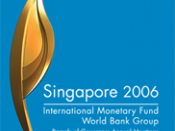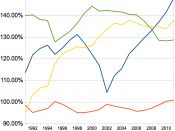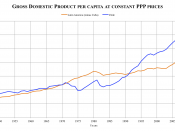Research Project Argentina's economic crisis of 2001 - Causes and Consequences Argentina, once the darling of Latin America, has now become its liability. During the first half of the 1990's it grew 45 % while curtailing decades of hyperinflation. The region made major changes to its foreign investment policy, becoming a favourite among emerging market investors. Despite early gains, Argentina is once again in a deep economic crisis-its fourth in the last two decades. The country is in its third year of recession, unemployment stands at 15%, foreign investment is wavering, and Argentina is struggling to pay back $124-billion in foreign debt.
What went wrong? Today's crisis can be partially attributed to the monetary policy introduced in 1991 by Domingo Cavallo, the economy minister, who pegged the peso one-to-one with the U.S. dollar. While it succeeded in curbing inflation and providing price stability, it did not provide the intended platform from which Argentina could build.
The Argentine bank committed to never printing unbacked pesos. This solved Argentina's inflation problems and investors poured money into the country. From 1991 to 1996, Argentine per capita GDP grew at an average rate of 4.8% (Ian Campbell). Price stability was achieved but at the expense of Argentina's growth. Pegging its currency to the dollar had an impact on the economy's ability to compete and grow; consequently, the country's economy took a turn for the worse.
The Argentine economy is now in a deep crisis without a clear road to economic recovery. Unless it's economy can grow quickly, the government may have to devalue its currency - that would entail default on foreign and domestic debt and the imminent withdraw of foreign investments in all emerging markets.
During the late 1990's the growth in technology caused the U.S. dollar to appreciate relative to other currencies...


